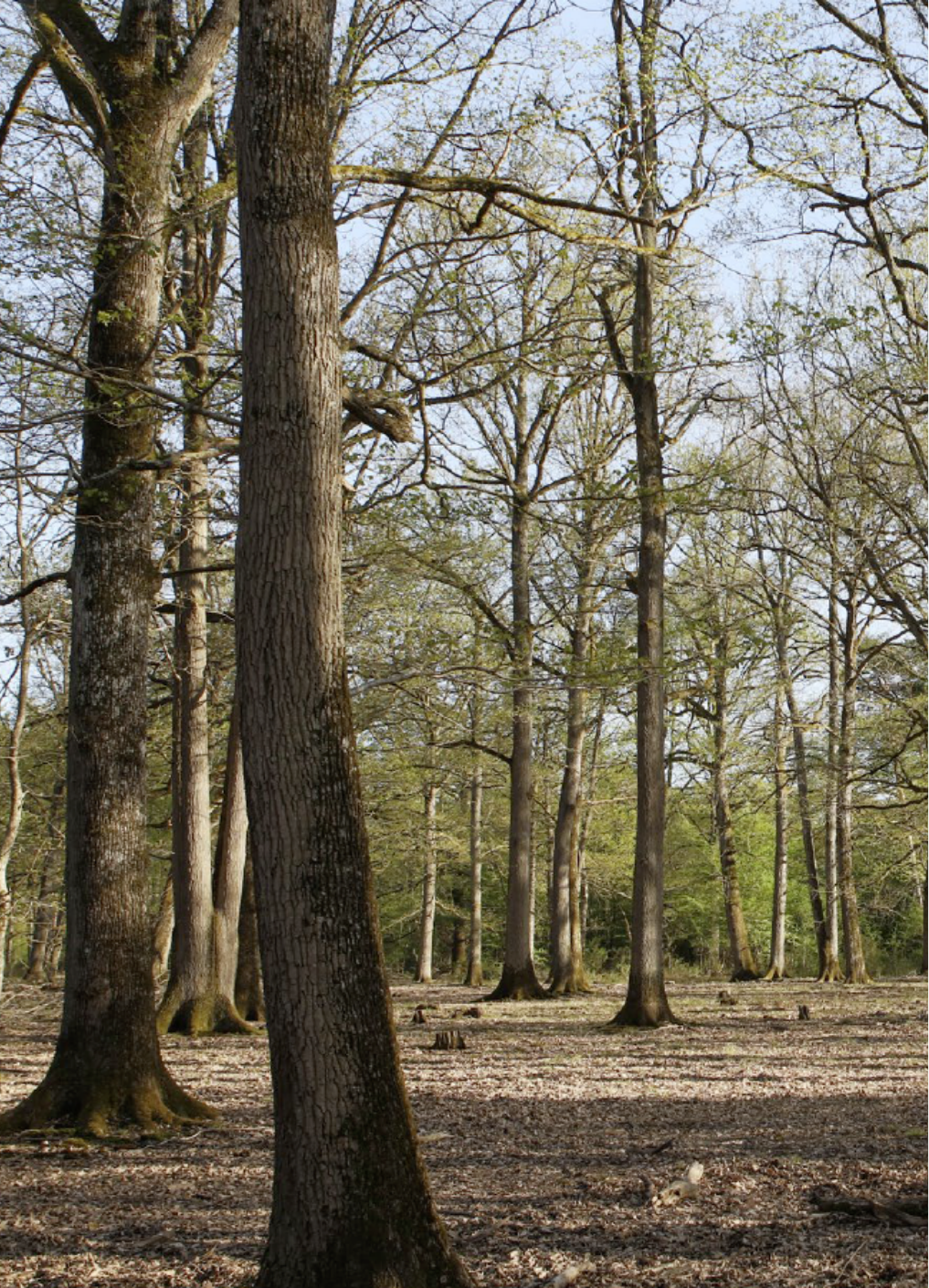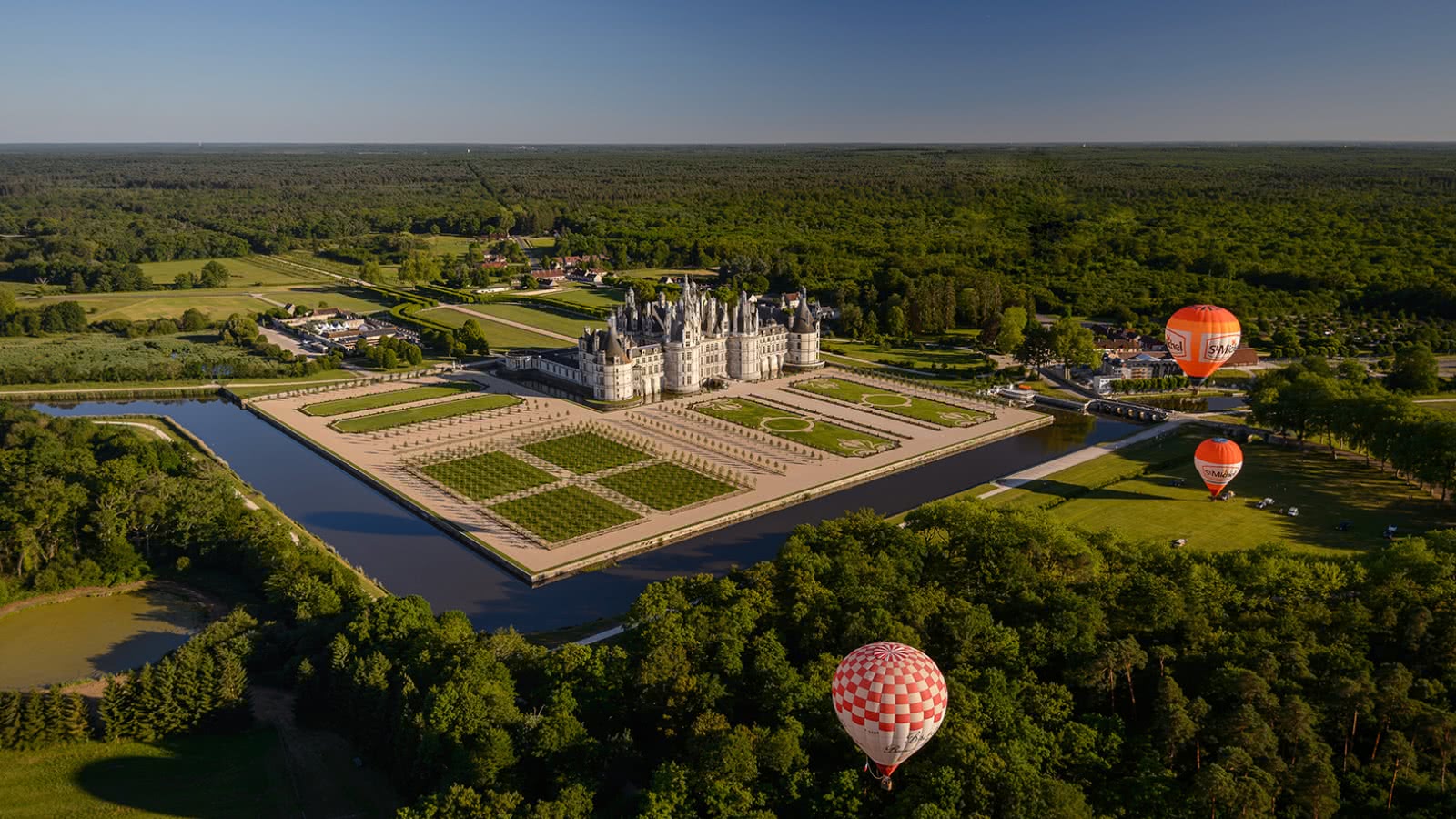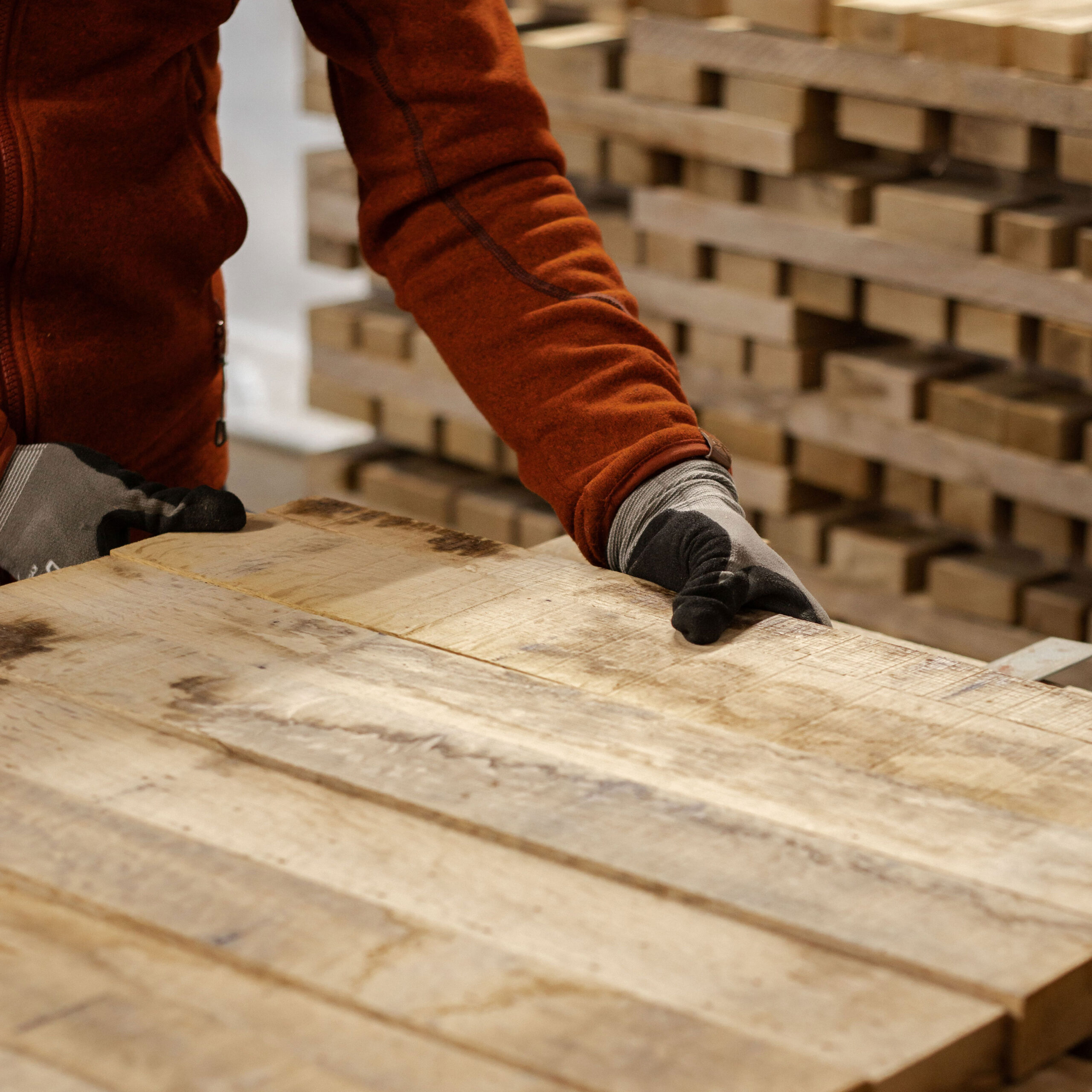Chambord is an exceptional work of art, registered as early as 1840 in the first list of historic monuments and since 1981 as a UNESCO World Heritage Site. Emblematic of the French Renaissance all over the world, the château is indissolubly associated with the vast forest
estate surrounding it. Comprising 13000 acres and 20 miles of external walls, the Domaine national de Chambord is the largest enclosed forest park in Europe.
Located in the Loire valley, in the center of France, the forest of Chambord neighbors the national forests of Boulogne, Russy and Blois, all of which are conducive to manufacture of oak barrels. It is also less than 95 miles from the renowned forests of Loches, Bercé and Tronçais. Developed over the course of centuries, its natural territory has been preserved and its entire forest is classified as a historic monument. Chambord has adhered to the sustainable management certifications known as Natura 2000 and PEFC (Program for the Endorsement of Forest Certification schemes).

The histories of the forest and the château of Chambord are indissociable. The château is an architectural work of art ardently desired by François I and the forest is its crown jewel. Ever since the 16th century, when it became the seat of a royal hunting captaincy, the estate has formed an indissoluble unit. Brother of Louis XIII, Gaston, Duke of Orléans carried on the work of François I by purchasing new lands. Louis XIV, the king of Poland Stanislaw Leszczynski and Maurice, Count of Saxony all subsequently inhabited the estate at one time or another. A major gathering point for French hunters until 1947, the forest has been carefully planned out and properly maintained to host internationally renowned hunting activities. From 1965 until 2010, the estate was home ground for French presidential hunts.
Nowadays, the National Estate of Chambord is associating itself with the world of wine manufacture by proposing a limited edition of top-quality oak barrels. This project is at once patrimonial, economic and sustainable : Chambord wishes to reposition its forest in the history of France, promote its wood industry and develop an integrated approach to oenotourism.
Chambord oak is split into wood staves by hand, according to time-honored rules. For two years, it is left to mature in open air in the heart of the estate. Scrupulous observation of the grand cooperage tradition of oak barrel making guarantees an irreproachable organoleptic result.
The Chambord barrel is a tool for oenological growth associating the elegance of silky tannins with the subtle aromas revealed in the toasting process. Just like its illustrious Loire valley neighbors, Chambord oak endows the greatest French and worldwide wines with structure, length, finesse, freshness and complexity. Available in the form of lengthily medium toasted casks, Chambord barrels may also contain non- toasted heads ( toasting possible on request). Medium long-lasting toasting is recommended as an ideal way of revealing the richness of the oak and of respecting the fruit.





The first edition of these barrels consists of 100 numbered specimens available in formats of 225 liters (Bordeaux barrel) or 228 liters (Burgundy piece). Upcoming editions, which will be partially available in formats of 300, 350 or 400 as well as 225 and 228 liters, will not exceed 150 specimens. The manufacturing process is painstakingly mastered in its selection of oak trees, production of staves and design of the barrels themselves.
The National Estate of Chambord draws upon French craftsmanship and the local economy. The barrels are manufactured by master craftsmen whose methodology is in full compliance with the rules reflecting professional know-how and the French art of living. The manufacture of wood staves takes place near Chambord, in the Cizeau stave mill. Twenty-four months of open air drying in the park of Chambord with its Loire valley climate are subsequently essential to the maturation of the exceptional staves. The manufacture and toasting of the barrels is performed by the Cadus cooperage in Burgundy. For every barrel delivered, and in partnership with a Burgundy based tree nursery, Cadus has promised that a tree will be replanted. Since the operation got underway (in 2015), more than 38000 sessile and pedonculated oaks have been replanted. Today the National Estate of Chambord is proud to promote a reforestation project in full alignment with its values. Last but not least, the traditional slate slab adorning the barrel and the glass bung plug have been engraved and painted by Charente craftsmen. The project is monitored by Cognac-based consulting firm in oenological wood (“oakmasters to serve winemakers”), Oenowood International.
When you choose a “Chambord” barrel, a product available only on a limited basis (100 barrels a year), you are making the choice of excellence and a specifically French art of living. And you are growing your wines amidst five centuries of French history. Finally, as a user of “Chambord” barrels, you will be eligible, on completion of initial oenological aging, to join the short list of wines marketed with the indication Matured in Chambord oak barrels.
Extracts from the presentation of the Domaine national de Chambord
Picture credit : Domaine national de Chambord






 This website uses cookies to enhance your web experience.
This website uses cookies to enhance your web experience.